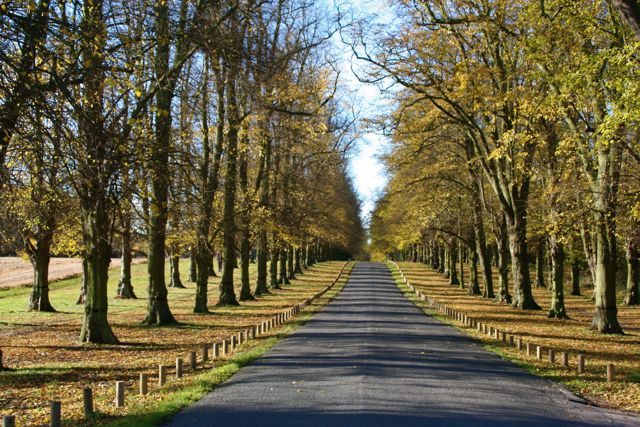
October 20, 2015, by Harry Cocks
The Dukeries and the Picturesque in Eighteenth-Century Nottinghamshire
In the mid-eighteenth century Horace Walpole described Nottinghamshire as ‘the Dukeries,’ referring to the fact that the county was synonymous with the splendour of its aristocratic landholdings. The most prominent of these were the four parkland estates made by enclosing the moors and waste of Sherwood: Rufford, Newstead, Welbeck and Worksop. Walpole described these compact neighbouring estates as ‘a very heptarchy of little kingdoms elbowing one another.’ The historic families who occupied these estates were the Dukes of Kingston of Thoresby Park, the Dukes of Newcastle of Clumber Park (lime tree avenue pictured top right), the Dukes of Portland at Welbeck Abbey and Dukes of Norfolk at Worksop Manor.
In a new article for Rural History (see link below), Richard Gaunt of Nottingham History argues that although these estates seemed to present an image of aristocratic permanence, they were in fact far from being unchanging repositories of Ducal influence. The owners of these lands, Dr Gaunt argues, competed with one another in economic, political and cultural terms, aiming to fashion the most economically viable and aesthetically pleasing symbol of their status and power;
These landscapes “offered laboratories for experimentation” with ideas of landscape, parkland management, and aesthetic theories of the picturesque. That view of landscape management was characterised by naturalism, irregular and undressed gardens, serpentine walks, scattered trees and vistas opened up to views, as opposed to the more formal garden designs such as those popularised by Lancelot “Capability” Brown. Welbeck, for instance, was improved by the Humphry Repton between 1789 and 1803, while the Duke of Portland was also a devotee of picturesque. Repton also created a cascade at Thoresby for the Duke of Kingston.
The picturesque, Gaunt argues, expressed a conservative attachment to slow, organic change, and as such “validated…the same sort of organic values pioneered by Edmund Burke and other writers…in reaction against the excesses of the French Revolution.” Such designs, and the associated extensive tree plantations, not only made economic sense, but also symbolised age, time and aristocratic permanence. By 1794 Thoresby contained 981 acres of plantations, with provision for 300 more.
However, these were also contested landscapes. The fourth Duke of Newcastle in particular feared the encroachments of a revolutionary mob after his opposition to parliamentary reform had led to the burning down of Nottingham Castle in 1831. Picturesque ideas also encouraged a more benevolent form of estate management through friendly relations with tenants and labourers, for instance, the provision of more comfortable cottages for estate workers and tenants, and the planning of estate village, though these were placed comfortably at the edge of the parks. Economic innovation also took place, with the Duke of Portland constructing one of the first sewage farms on his Clipstone estate in order to fertilise his land from the sewage-laded river Maun as it left Mansfield. The turn towards the picturesque in the Dukeries, Dr Gaunt argues, reflected varied political, economic and aesthetic influences. Its ancient woodland expressed constancy and continuity but masked the degree of internal change to which these estates were subjected.
“Patrician Landscapes and the Picturesque in Nottinghamshire, c 1750-1850”
Rural History, 26, 2 (October 2015), pp. 161-180
No comments yet, fill out a comment to be the first

Leave a Reply